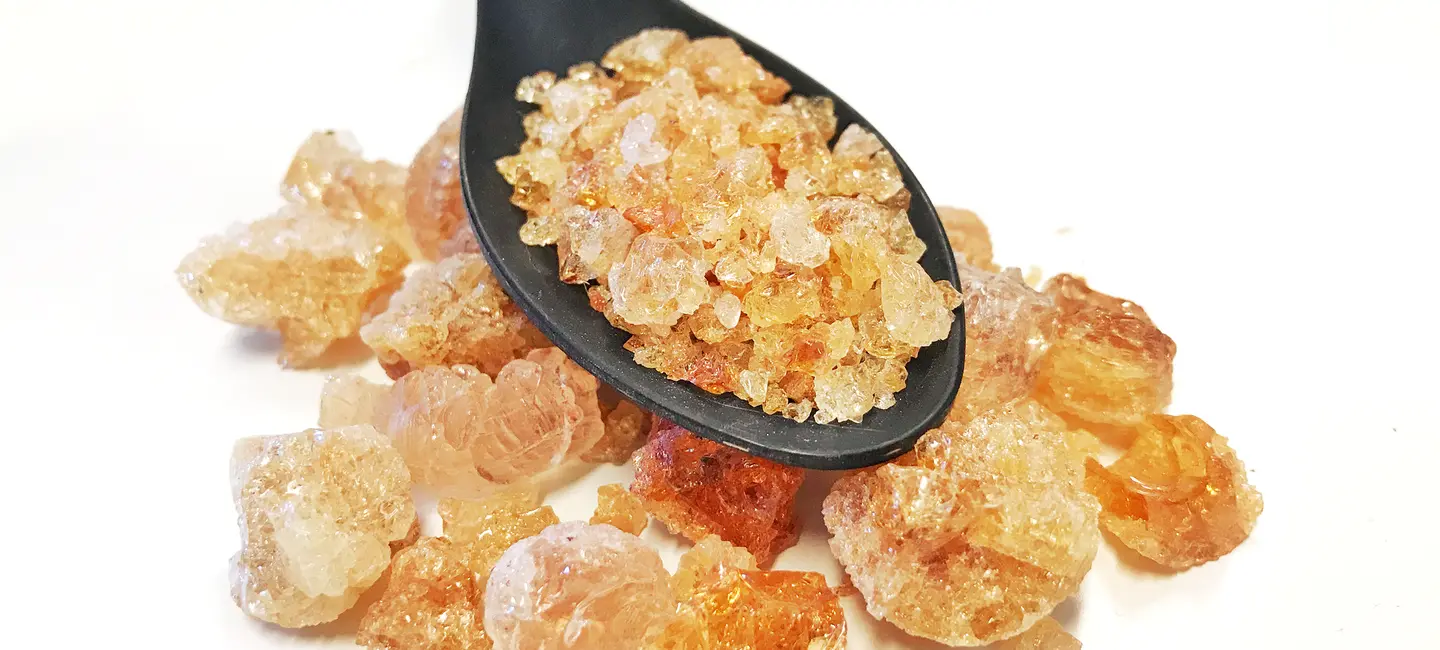
Gum arabic is the gum that is exuded from certain trees, such as the Acacia senegal tree. It's a source of dietary fiber that can dissolve in water.
Gum arabic tends to make people feel full, so they might stop eating earlier than they otherwise would. This might lead to weight loss and reduced cholesterol levels.
Gum arabic is used for high cholesterol, diabetes, irritable bowel syndrome (IBS), and other conditions, but there is no good scientific evidence to support these uses.
Don't confuse gum arabic with Acacia rigidula, acai, or cassie absolute (Acacia farnesiana). These are different plants with different effects.
Is It Effective?
There is interest in using gum arabic for a number of purposes, but there isn't enough reliable information to say whether it might be helpful.
Is it Safe?
When taken by mouth: Gum arabic is likely safe when consumed in amounts commonly found in food. Gum arabic is possibly safe when taken as medicine. Up to 30 grams daily has been used safely for 6 weeks. It can cause minor side effects, including gas, bloating, and nausea.
When applied to the skin: There isn't enough reliable information to know if gum arabic is safe when applied to the skin or what the side effects might be.
Special Precautions & Warnings:
Pregnancy and breast-feeding: There isn't enough reliable information to know if gum arabic is safe to use when pregnant or breast-feeding. Stay on the safe side and stick to food amounts.
Cross-allergies: People with known allergies to quillaja bark might have a reaction to gum arabic.
Amoxicillin (Amoxil, Trimox)
Interaction Rating=Moderate Be cautious with this combination.
Gum arabic can prevent the body from absorbing the antibiotic amoxicillin. To prevent this interaction, take gum arabic at least four hours before or after taking amoxicillin.
Medications taken by mouth (Oral drugs)
Interaction Rating=Moderate Be cautious with this combination.
Gum arabic contains fiber. Taking gum arabic at the same time as medications that you take by mouth can affect how much medication the body absorbs. To prevent this interaction, take gum arabic at least one hour after medications you take by mouth.
There are no known interactions with herbs and supplements.
There are no known interactions with foods.
There isn't enough reliable information to know what an appropriate dose of gum arabic might be. Keep in mind that natural products are not always necessarily safe and dosages can be important. Be sure to follow relevant directions on product labels and consult a healthcare professional before using.
Acacia, Acacia Gum, Acacia arabica, Acacia senegal, Acacia verek, Arbre à Gomme Arabique, Bum Senegal, Bomme Arabique, Bomme de Senegal, Bummae Momosae, Goma Arábiga, Gomme Acacia, Gomme Arabique, Gomme d'Acacia, Gomme Sénégal, Gommier Blanc, Gum Acacia, Indian gum, Khadir, Kher, Kumatia, Mimosa senegal, Senegalia senegal.
Information on this website is for informational use only and is not intended to replace professional medical advice, diagnosis, or treatment. While evidence-based, it is not guaranteed to be error-free and is not intended to meet any particular user’s needs or requirements or to cover all possible uses, safety concerns, interactions, outcomes, or adverse effects. Always check with your doctor or other medical professional before making healthcare decisions (including taking any medication) and do not delay or disregard seeking medical advice or treatment based on any information displayed on this website.
© TRC Healthcare 2024. All rights reserved. Use and/or distribution is permitted only pursuant to a valid license or other permission from TRC Healthcare.
